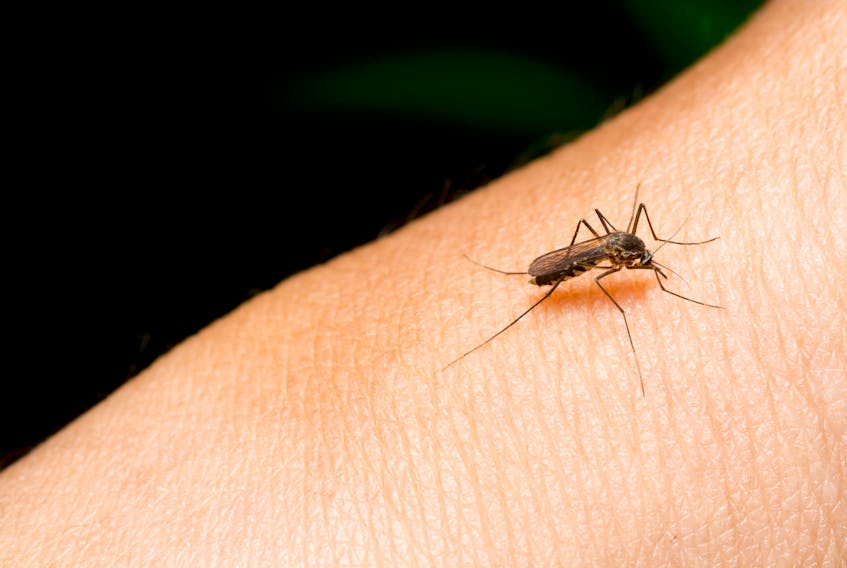Canadian and U.S. diplomats in Cuba who suffered from a mysterious illness may have been exposed to toxic levels of insecticides used to kill mosquitos — not sonic attacks, a new study by a Nova Scotia research team suggests.
During the height of the Zika virus scare, dozens of diplomats and their family members living in Havana experienced a variety of symptoms including headaches, loss of balance and hearing problems.
Their brain injuries, which occurred between late 2016 and 2018 and became known as the Havana syndrome, fuelled speculation that the diplomats had been attacked by some type of sonic or microwave weapon.
But new research by Dalhousie University and the Nova Scotia Health Authority has found the neurological symptoms may have been caused by insecticides.
“It’s very clear that when the symptoms started there was a huge increase in fumigation in Cuba,” said Dr. Alon Friedman, the study’s lead author and a professor at Dalhousie University’s department of medical neuroscience.
“That led us to do some blood tests that confirmed that some of the toxins are in the blood of the diplomats.”
The findings raise questions of a global magnitude about how to prevent the spread of mosquito-borne infectious diseases, such as the Zika virus, while limiting exposure to toxic insecticides.
Still, the research hasn’t completely ruled out a more nefarious source, such as exposure to a chemical warfare agent like sarin gas.
“There are terrorist groups and countries that do have these weapons and theoretically it’s still an open question,” Friedman said.
“But in light of the heavy fumigation, we think it could be very much incidental exposure to neurotoxins.”
The research started in August 2018 and included 26 Canadian diplomats and their family members — some of whom were without symptoms and were tested before being posted to Cuba.
Friedman said the researchers had no assumptions or hypotheses about a possible cause, and instead allowed their discoveries to lead them “like a detective story.”
Using a combination of common clinical techniques and cutting-edge technology, researchers pinpointed parts of the brain with evidence of trauma, including the basal forebrain.
“It’s a very small but important part of the brain ... associated with the cholinergic nervous system,” Friedman said. “It’s one of the most important neurotransmitter systems.”
The discovery led researchers to explore injuries to that specific region of the brain. They discovered that neurotoxins were a plausible culprit.
"The bottom line is that something that is not acutely toxic ... isn’t necessarily nontoxic."
-Crystal Sweeney, Dalhousie researcher
“Once we considered neurotoxins, we asked what could be the source of exposure, and pesticides were one possibility,” Friedman said.
Though the research has not yet been peer-reviewed, the findings were compelling enough to share with Global Affairs Canada to ensure measures could be taken to limit continued exposure.
John Babcock, a spokesman for Global Affairs Canada, said the department is working closely with the Brain Repair Centre in Halifax to support the affected diplomats and their families.
“This has been a harrowing experience for these diplomats and their families and we will continue to take all steps necessary to help them,” he said in an email.
“Each affected individual, adults and children, who have reported symptoms have received medical testing in Canada and have been assessed by specialists due to the nature of their symptoms and reported time posted in Cuba.”
Babcock added that the unusual health symptoms are still under investigation by the RCMP and Health Canada officials.
“While we are exploring all avenues, including the research at Dalhousie, no definitive cause of the health incidents has been identified to date,” he said.
There have been no new cases reported since December 2018.
Crystal Sweeney, a Dalhousie University researcher specializing in human biomonitoring of pesticides, said pesticide use is strictly regulated in Canada.
But she said other countries may follow different guidelines or permit the use of different pesticides.
Sweeney said pesticide exposure can result in a range of symptoms from acute poisoning to chronic illness.
“The bottom line is that something that is not acutely toxic — for example causes no immediate effects such as rash, vomiting, or headaches — isn’t necessarily nontoxic,” she said.
Sweeney pointed to DDT as an example, which was widely used for insect control before it was banned in the 1970s because of its impact on humans.
“There were no obvious signs of toxicity immediately upon exposure but we’ve come to learn it’s not as safe as initially believed,” she said.









